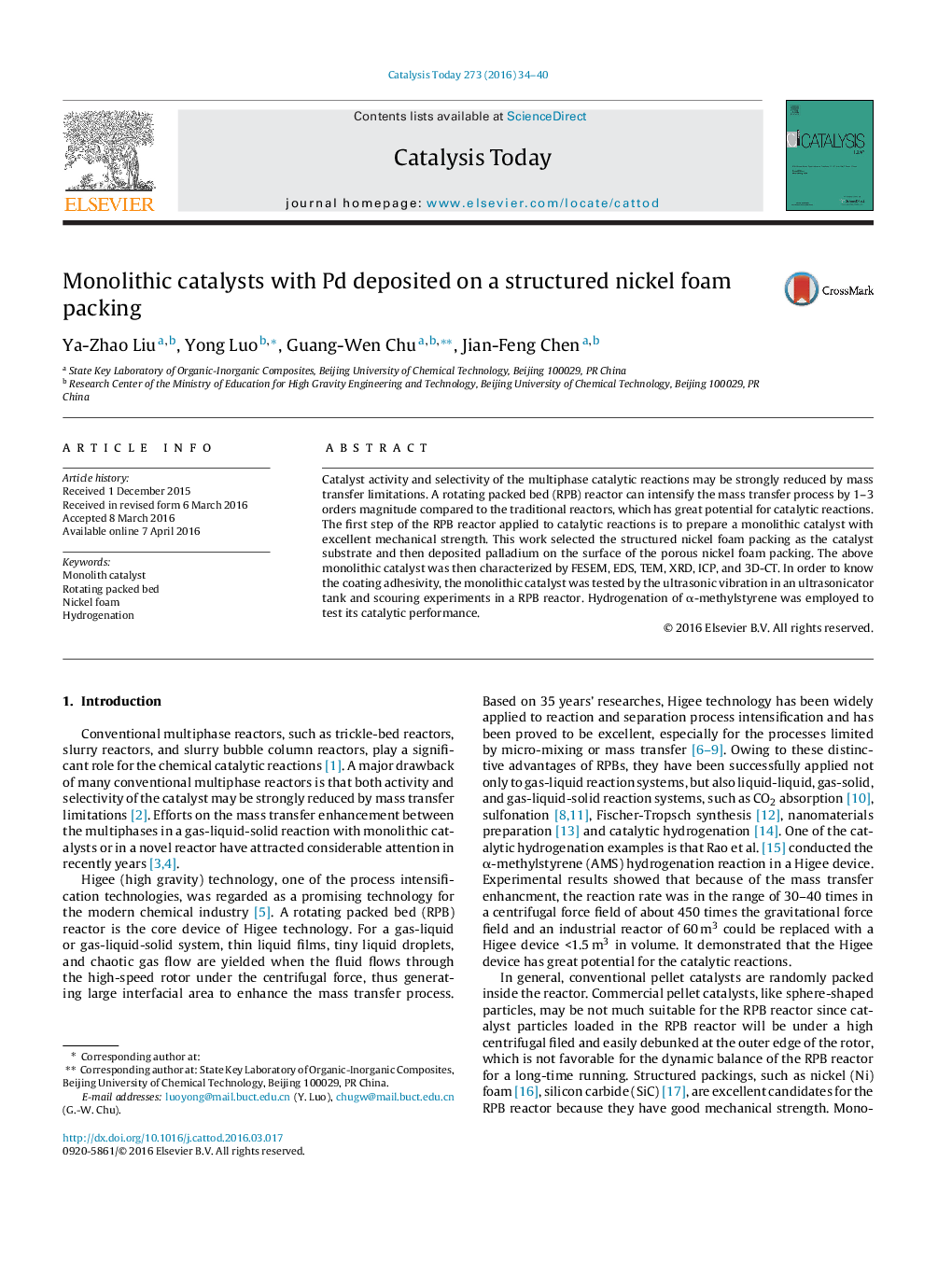| Article ID | Journal | Published Year | Pages | File Type |
|---|---|---|---|---|
| 53220 | Catalysis Today | 2016 | 7 Pages |
•A Pd/Ni foam monolithic catalyst with good mechanical strength was prepared.•A micro-CT was used to get the realistic 3D images of the monolithic catalyst.•The coating adherence was tested by scouring experiments in a RPB reactor.•The activity of the monolithic catalyst was demonstrated by the AMS hydrogenation.
Catalyst activity and selectivity of the multiphase catalytic reactions may be strongly reduced by mass transfer limitations. A rotating packed bed (RPB) reactor can intensify the mass transfer process by 1–3 orders magnitude compared to the traditional reactors, which has great potential for catalytic reactions. The first step of the RPB reactor applied to catalytic reactions is to prepare a monolithic catalyst with excellent mechanical strength. This work selected the structured nickel foam packing as the catalyst substrate and then deposited palladium on the surface of the porous nickel foam packing. The above monolithic catalyst was then characterized by FESEM, EDS, TEM, XRD, ICP, and 3D-CT. In order to know the coating adhesivity, the monolithic catalyst was tested by the ultrasonic vibration in an ultrasonicator tank and scouring experiments in a RPB reactor. Hydrogenation of α-methylstyrene was employed to test its catalytic performance.
Graphical abstractFig. 1(a) shows that palladium coated on the nickel foam did not change the reticulated structures. Fig. 1(b) gives a large-area view of the Pd/Ni foam and the coated catalyst surface was found to be constructed by many particles at the nano-scale as shown in Fig. 1(c). Fig. 1(d) displays that the Pd composite was coated with a thickness less than 1 μm.Figure optionsDownload full-size imageDownload high-quality image (183 K)Download as PowerPoint slide
